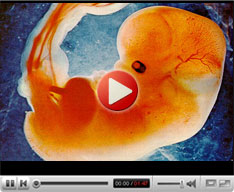
Know Infertitlity
Infertility treatments
Diagnosing InfertilityMale:
Obstetrics and Gynaecology
Infertility Treatment Services
Andrology |
Hysterosalpingogram (HSG)A hysterosalpingogram is an X-ray test which allows the doctors to get a clear view at the inside of the uterus and the fallopian tubes. It is often recommended for those women who are unable to achieve pregnancy. The test will reveal any problems associated with the uterus, tubal problems such as tubal obstruction, dilation (hydrosalpinx) etc. HSG ProcedureDuring HSG, you may take an anti-inflammatory medication prior to the procedure. An iodine containing dye is put through a small catheter which is inserted through the vagina and into the uterus. The dye will flow from the uterus to the fallopian tubes since they are connected. As the dye passes through the uterus and fallopian tubes, a steady beam of x-ray produces images on a fluoroscopy monitor which in turn reveal any injury or abnormal structure of the uterus or fallopian tubes, tubal blockage that prevents the movement of the egg towards the uterus. This blockage is also likely to prevent the sperm from moving into a fallopian tube and fertilizing the egg. X-ray pictures which are available in a matter of minutes are studied and examined by the radiologist and the gynecologist. It is optimally performed within the first 12 days after the beginning of a normal menstrual period. Occasionally, HSG can also detect problems on the inside of the uterus that can prevent a fertilized egg from getting implanted to the uterine wall. A HSG is also done to identify endometrial polyps, submucus fibroids, intrauterine adhesions, uterine and vaginal septa uterine cavity abnormalities etc. Complications of HSGYou are likely to experience heavy cramping during and after the procedure. A sticky vaginal discharge is also common for a few days as the dye is removed from the uterus. Fever with constant pain suggests the possibility of early infection. If these symptoms persist, you should consult your doctor immediately. |
Our TeamNews & EventsClinic LocationVideo Gallery |















